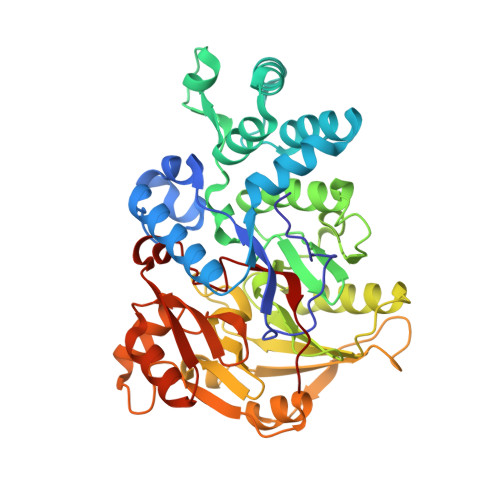Crystal structures of arginine deiminase with covalent reaction intermediates; implications for catalytic mechanism
Das, K., Buttler, G.H., Kwiatkowski, V., Clark Jr., A.D., Yadav, P., Arnold, E.(2004) Structure 12: 657-667
- PubMed: 15062088
- DOI: https://doi.org/10.1016/j.str.2004.02.017
- Primary Citation of Related Structures:
1LXY, 1S9R - PubMed Abstract:
Arginine deiminase (ADI), an enzyme that hydrolyzes arginine to generate energy in many parasitic microorganisms, has potent anticancer activities and can halt growth of solid tumors. We determined the crystal structure of ADI from Mycoplasma arginini in two different forms (1.6 and 2.0 A resolution) using multiple isomorphous replacement. ADI shares common structural features with the arginine-catabolizing enzymes Arg:Gly amidinotransferase and dimethylarginine dimethyl-aminohydrolase; ADI contains an additional domain of five helices. The scissile C-N bonds of the substrates and the catalytic triads (Cys398-His269-Glu213 of ADI) for the three enzymes superimpose on each other. The ADI structure from form I crystals corresponds to a tetrahedral intermediate with four heteroatoms (1S, 2N, 1O) covalently bonded to the reaction-center carbon. The structure from form II crystals represents an amidino-enzyme complex; the reaction-center carbon is covalently bonded to Cys398 sulfur and two nitrogens, and the reacting water molecule is only 2.54 A away.
Organizational Affiliation:
Center for Advanced Biotechnology and Medicine (CABM) and Department of Chemistry and Chemical Biology, Rutgers University, 679 Hoes Lane, Piscataway, NJ 08854 USA.
















